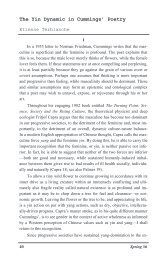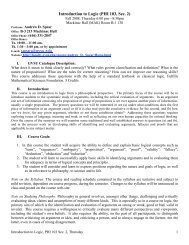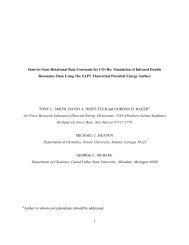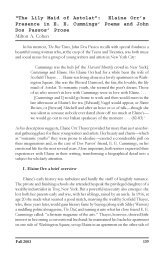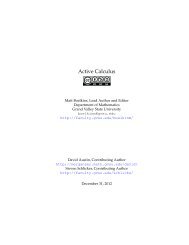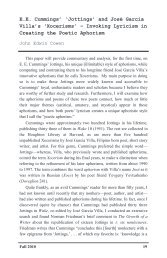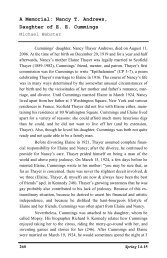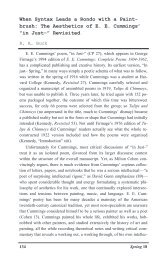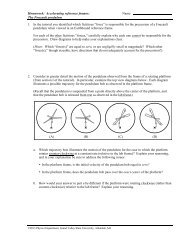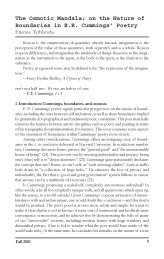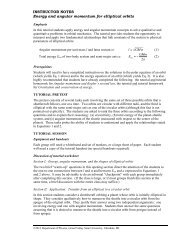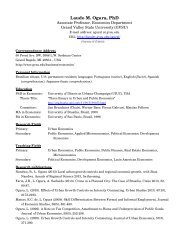Active Calculus - Gvsu - Grand Valley State University
Active Calculus - Gvsu - Grand Valley State University
Active Calculus - Gvsu - Grand Valley State University
- No tags were found...
Create successful ePaper yourself
Turn your PDF publications into a flip-book with our unique Google optimized e-Paper software.
4.1. DETERMINING DISTANCE TRAVELED FROM VELOCITY 91Activity 4.1.Suppose that a person is walking in such a way that her velocity varies slightly according tothe information given in the table below and graph given in Figure 4.2.t 0.00 0.25 0.50 0.75 1.00 1.25 1.50 1.75 2.00v(t) 1.5000 1.7891 1.9375 1.9922 2.0000 2.0078 2.0625 2.2109 2.50003 mph y = v(t)2hrs11 2Figure 4.2: The graph of y = v(t).(a) Using the grid, graph, and given data appropriately, estimate the distance traveled bythe walker during the two hour interval from t = 0 to t = 2. You should use time intervalsof width △t = 0.5, choosing a way to use the function consistently to determinethe height of each rectangle in order to approximate distance traveled.(b) How could you get a better approximation of the distance traveled on [0, 2]? Explain,and then find this new estimate.(c) Now suppose that you know that v is given by v(t) = 0.5t 3 −1.5t 2 +1.5t+1.5. Rememberthat v is the derivative of the walker’s position function, s. Find a formula for s so thats ′ = v.(d) Based on your work in (c), what is the value of s(2) − s(0)? What is the meaning of thisquantity?⊳




